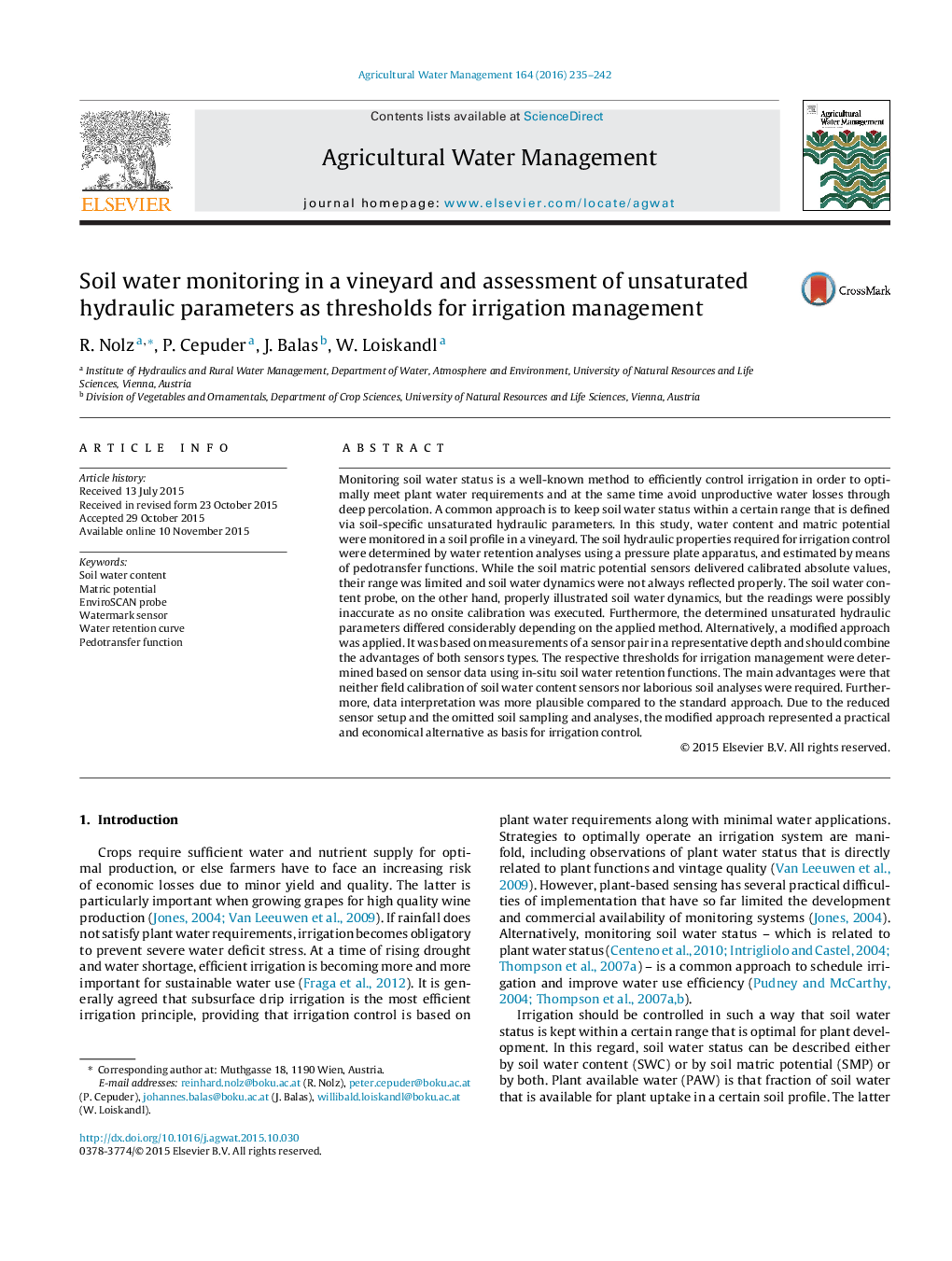| کد مقاله | کد نشریه | سال انتشار | مقاله انگلیسی | نسخه تمام متن |
|---|---|---|---|---|
| 4478377 | 1316369 | 2016 | 8 صفحه PDF | دانلود رایگان |
• Soil water content and soil matric potential were monitored.
• Sensor readings were assessed with regard to interpretability for irrigation control.
• Retention functions were determined as basis for irrigation control.
• A modified approach was established based on in-situ water retention data.
• The modified approach proved to be a practical alternative for irrigation control.
Monitoring soil water status is a well-known method to efficiently control irrigation in order to optimally meet plant water requirements and at the same time avoid unproductive water losses through deep percolation. A common approach is to keep soil water status within a certain range that is defined via soil-specific unsaturated hydraulic parameters. In this study, water content and matric potential were monitored in a soil profile in a vineyard. The soil hydraulic properties required for irrigation control were determined by water retention analyses using a pressure plate apparatus, and estimated by means of pedotransfer functions. While the soil matric potential sensors delivered calibrated absolute values, their range was limited and soil water dynamics were not always reflected properly. The soil water content probe, on the other hand, properly illustrated soil water dynamics, but the readings were possibly inaccurate as no onsite calibration was executed. Furthermore, the determined unsaturated hydraulic parameters differed considerably depending on the applied method. Alternatively, a modified approach was applied. It was based on measurements of a sensor pair in a representative depth and should combine the advantages of both sensors types. The respective thresholds for irrigation management were determined based on sensor data using in-situ soil water retention functions. The main advantages were that neither field calibration of soil water content sensors nor laborious soil analyses were required. Furthermore, data interpretation was more plausible compared to the standard approach. Due to the reduced sensor setup and the omitted soil sampling and analyses, the modified approach represented a practical and economical alternative as basis for irrigation control.
Journal: Agricultural Water Management - Volume 164, Part 2, 31 January 2016, Pages 235–242
